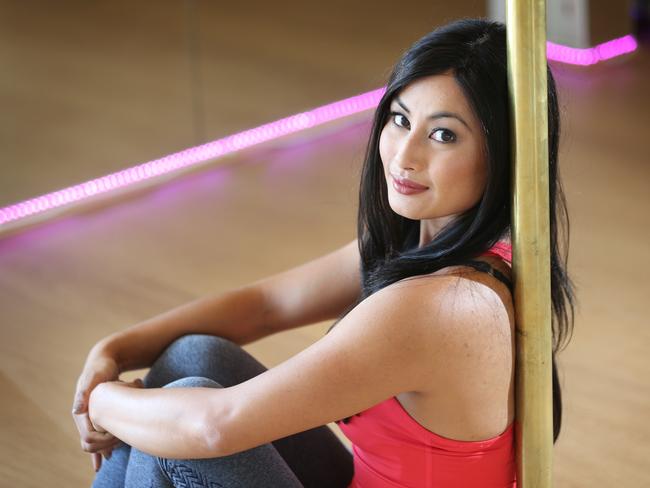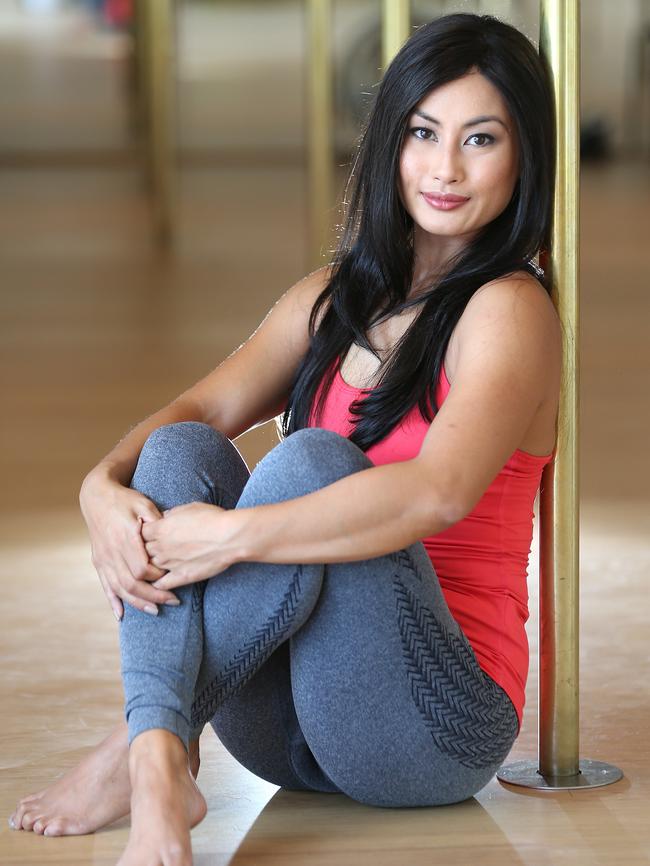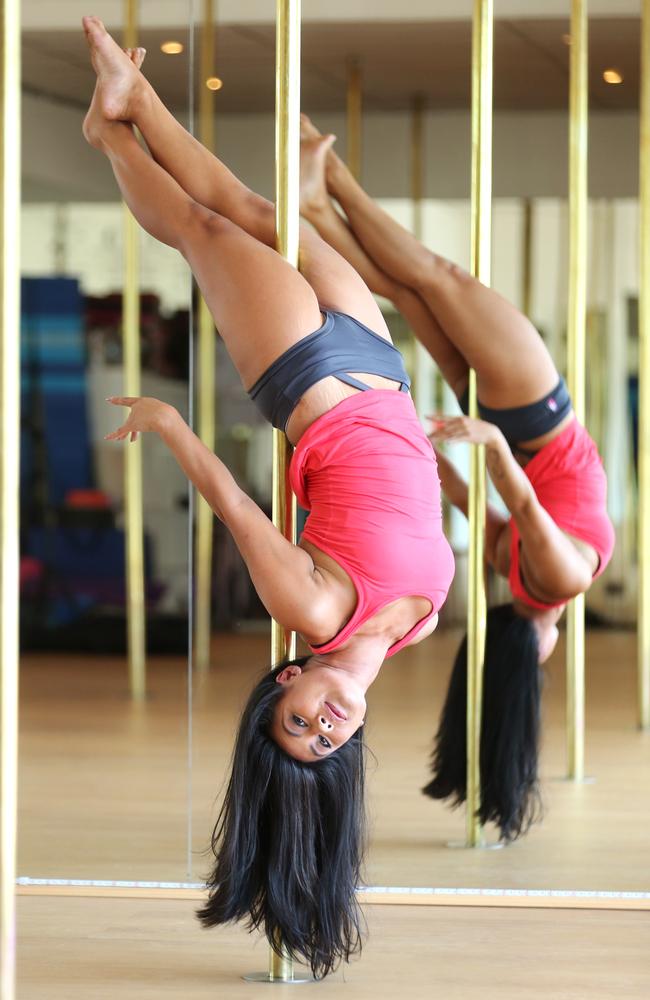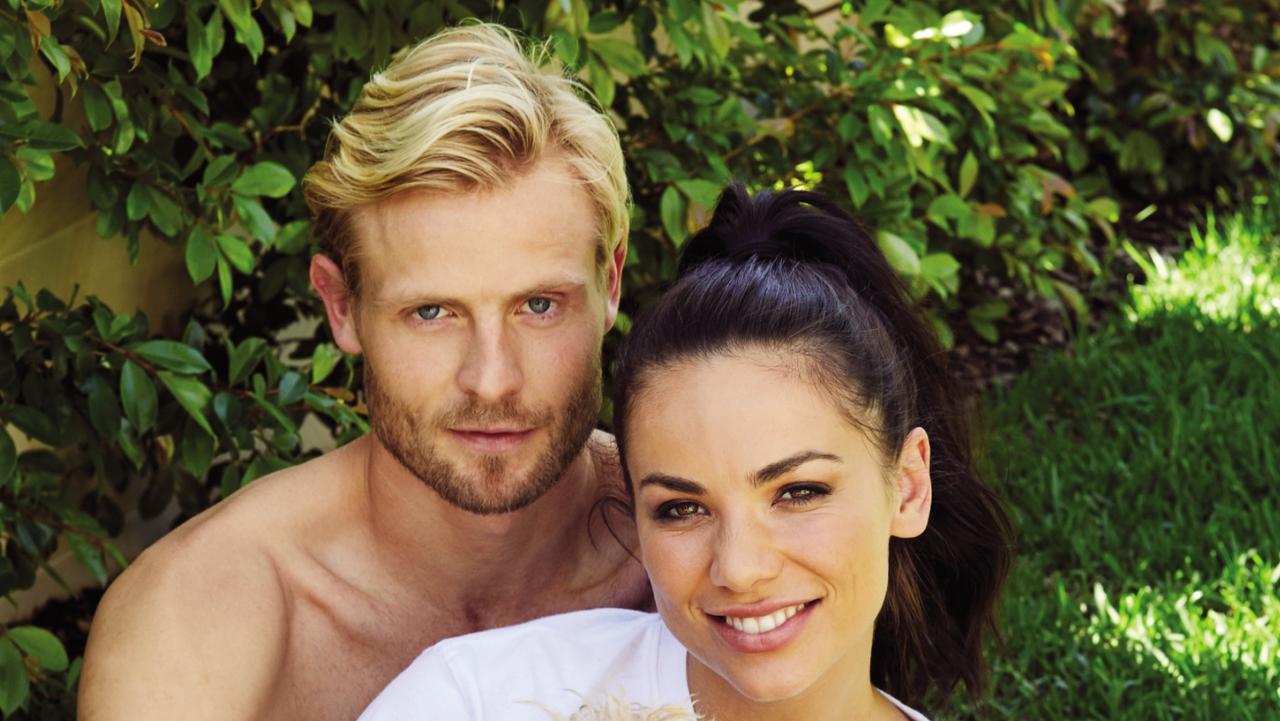Pole dancer overcomes addiction to pulling own hair out
KELLY Inn talks to Beverley Hadgraft about her transformation from balding mother to the director of a pole dancing studio.
We’ve all felt so stressed out we’ve declared: “It made me want to pull my hair out!” but hair-pulling or trichotillomania is a very real condition thought to affect around two per cent of the population.
Here, Sydney-based Kelly Inn, 28, recalls her personal battle with the condition that has plagued her.
“From the age of five, I was abused. I knew it was wrong but didn’t know where to seek help. It made me really stressed. At 13, when I was bullied as well, my stress got out of control.

Scared and lonely and with no one to help me — even my parents didn’t know about it — I started pulling my hair. It was as if the stress was an itch and pulling my hair out the relief.
I turned it into a game in which I had to make sure I got the whole follicle. Within just five minutes, I’d have pulled out up to 100 hairs and created a bald spot. Then I’d move on to another area.
Before long, pulling my hair out — or trichotillomania — had become an addiction. It didn’t matter that I knew the results would be bad, I just wanted the stress relief. Once that was sorted I could attend to how to cover up the bald spots by clipping on hair pieces or teasing my hair to one side.
No one knew what I was doing. It was too awkward to go to a hairdresser so I trimmed my hair myself. Meanwhile, my stresses got worse. I left home and fell pregnant at 16. I had a daughter and then, four years later, a son.
Despite everything, I was determined not to be that teen mum stereotype and got myself to university where I studied nursing.

Exams and then my marriage breakdown added to my stress and I pulled out even more of my hair. Night times, when the kids were in bed and I had nothing to distract me, were particularly bad. I tried wearing a bandanna or hat over my hair but nothing worked.
By the age of 25, I was pulling my hair out every day and then one day, I looked at the bald spot on my crown and realised I couldn’t hide it any longer. It was the size of the palm of my hand. I had to get help.
I began by seeing a doctor but was prescribed antidepressants which I didn’t even bother taking. I knew that this was a behavioural issue and I had to deal with the underlying cause of my pulling to stop. There was no quick fix.
I moved on to a psychologist. We talked about the underlying causes of my stress — the abuse and bullying — and she taught me cognitive behavioural therapies so I could find alternatives to pulling. Those ranged from breathing exercises to working out at the gym. Eating well helped and, interestingly, so did pole dancing as that turned out to be excellent for my self-confidence.
However, I still needed a barrier to stop me reaching for my hair so I searched online and found a hair restoration company which helps with a variety of hair loss problems and is experienced in trichotillomania.
It was really good. I’d never been to a hairdresser or had that experience of lying back with my head in a basin; just having someone wash my scalp felt very special and it was a pivotal moment.

I decided to have crown extensions glued to my scalp and that first session took four and a half hours and was a real emotional rollercoaster because it was the first time I’d exposed my bald scalp to anyone.
Two years on I’m still seeing my psychologist and the hair restoration professionals to have the hair replaced and both my emotions and my scalp are recovering well.
My personal life is going well, too. I have a job as an undergrad nurse at Liverpool Hospital, a good group of supportive friends and I’m running my own business — Just Pole Fitness [in Sydney’s Smithfield] which aims to provide women with both confidence and a community because they’re things I’d have really appreciated.
In fact, I’m in such a good place right now I can even foresee a day when I’ll be able to have a centre parting in my hair again — and there was a time that would have been a sick joke!”
For more information, visit Anxiety Recovery Centre Victoria at arcvic.org.au
Trichotillomania: Fast facts
Trichotillomania is estimated to affect as many as one in 50 people. It’s the most common cause of hair loss in children and, although it mostly starts in pre-teens, it has been seen in children as young as one.
While most sufferers pull head hair, others may pull eyebrows, eyelashes or body hair. Immediately before pulling, they often feel a mounting tension which is relieved when the hair follicle is removed.
The disorder often goes undetected because sufferers hide the condition with hats, scarfs, false eyelashes or eyebrow tattoos.
There is no proven cause but accepted theories include childhood trauma, stressful events and a neurochemical imbalance.
If you know of anyone who continuously pulls out their hair, get them medical help as soon as possible so the cause can be treated. Cognitive behaviour therapy is the most effective but it also helps to keep hair covered with a wig, hat or scarf to help prevent pulling.
Night time is the most common time for hair-pulling, so introduce a range of distractions, practise meditation or breathing exercises and avoid caffeine which can increase anxiety and prevent sleep.


